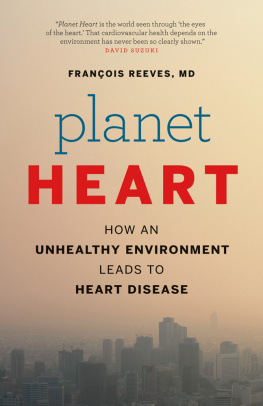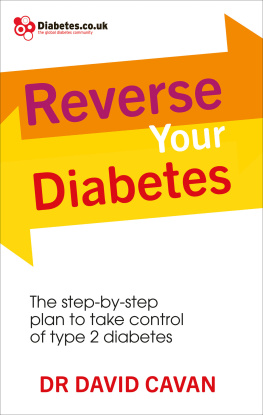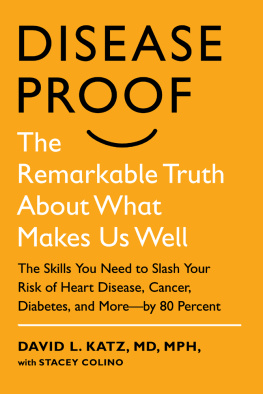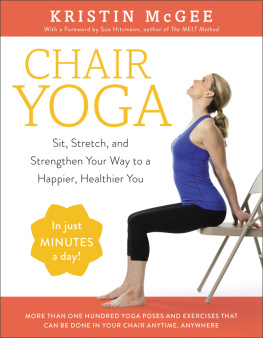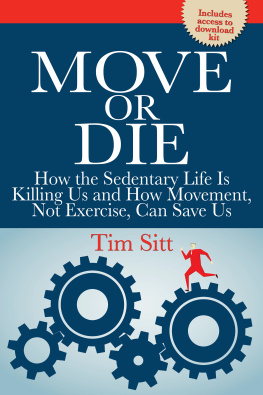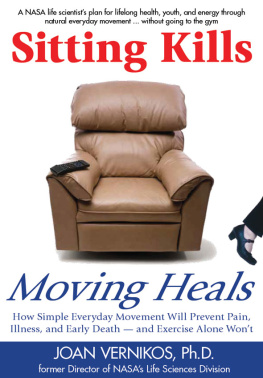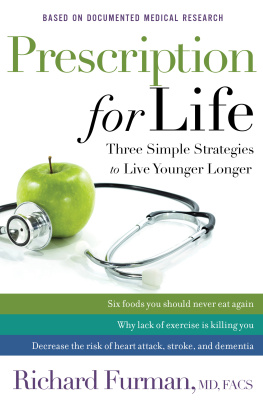Get Up!
Why Your Chair is Killing You and What You Can Do About It
James A. Levine, MD, PhD
Mayo Clinic and Arizona State University


GET UP!
Copyright James A. Levine, 2014.
All rights reserved.
First published in 2014 by PALGRAVE MACMILLAN in the United Statesa division of St. Martins Press LLC, 175 Fifth Avenue, New York, NY 10010.
Where this book is distributed in the UK, Europe and the rest of the world, this is by Palgrave Macmillan, a division of Macmillan Publishers Limited, registered in England, company number 785998, of Houndmills, Basingstoke, Hampshire RG21 6XS.
Palgrave Macmillan is the global academic imprint of the above companies and has companies and representatives throughout the world.
Palgrave and Macmillan are registered trademarks in the United States, the United Kingdom, Europe and other countries.
ISBN 978-1-137-27899-9
NEAT TM and NEAT are trademarks and service marks of Mayo Foundation for Medical Education and Research.
The authors affiliation with Mayo Clinic does not constitute an endorsement by Mayo Clinic of the content of this book, or any views or opinions expressed in this book.
Mayo Clinic owns equity in Muve Technologies, Inc. Mayo Clinic and James Levine, MD, PhD, may receive royalties from the sale of products developed and sold by Muve Technologies, Lumo BodyTech Inc and Kersh Health Inc.
Library of Congress Cataloging-in-Publication Data
Levine, James A., author.
Get up! : why your chair is killing you and what you can do about it / James A. Levine.
pages cm
Includes index.
ISBN 978-1-137-27899-9
1. Exercise. 2. Self-care, Health. 3. Lifestyles. I. Title.
QP301.L625 2014
613.71dc23
2014000413
A catalogue record of the book is available from the British Library.
Design by Letra Libre, Inc.
First edition: July 2014
10 9 8 7 6 5 4 3 2 1
Printed in the United States of America.
For my lab:
Shelly, Gabe, Chinmay and Samantha
Contents
Part I
The Chairmans Rise to Power
Part II
The Chairmans Curse
Part III
Oust the Chairman: The Solution Revolution
Introduction
How can my chair be killing me?
Can chairs kill us? We sit in them, work in them, shop in them, eat in them and date in them. We live amid a sea of chairs. In this book I argue that chairsadjustable, swivel, recliner, sofa, couch, four-legged, three-legged, wooden, plastic, dining and barall of themare out to get us, to harm us, to kill us.
Chair addictionlike the alcoholic thirsting for another Scotchis the constant need we have developed to sit. We slouch from bed to car seat, to work seat, to sofa. The cost is too great; for every hour we sit, two hours of our lives walk awaylost forever. The list of health consequences is an alphabet soup of lifes torments. A is for arthritis, B is for blood pressure, C is for cancer, D is for diabetes... and so it goes. But what I have learned is that it is not these health consequences that hurt people the most. Sedentary living etches away at our very essence. The spring in our step has vanished. We sit in our cubicles alone, blue and sad. Our chairs have become islands of isolation.
My colleagues and I have developed and delivered chair-release schemes to more than 60 corporations and dozens of schools. Walking through cube land in a contemporary corporation is rather like ambling around a morgue. The malaise of the modern American workplace is a contemporary cry of misery: Free us! Chair-sentenced workers would cry out and rise upif only they had time enough away from their screens to do so. The sitting disease is about far more than the health consequences ABCsthe sitting disease is about sentencing the modern soul to sedentariness. Together we are all dying a slow deathbody, mind and soulglued to our chairs.
But We Sit Every Day. People Have Sat for Centuries. How Can Sitting Be Harmful?
How can something that we do so many times each day hurt us? It seems implausible. But there are other things we do many times each day that have become unhealthy. Take eating: We eat several times every day. But do you need convincing as to how harmful eating has become? Eating, like sitting, is life threatening when done to excess and in the wrong way. Tens of thousands of studies have shown that nutricide (killing oneself with food) comes from overdosing our body with foods that most often resemble products from a chemistry experiment than natural foodstuffs. Yet we have to eat. Eating is essential for lifewhen undertaken in the right frequency, with the correct ingredients and at the appropriate dose. The same can be said for sitting.
The goal of sitting is to give our bodies a break from standing, which is the way the human anatomy and physiology is designed. Human design is to be upright for most of the day: walking at work, walking and nurturing our young, walking while inventing, walking while gathering our food, running on the hunt. Sitting, we know from studies in rural populations, is supposed to be undertaken in short batches to break up the motion of a dynamic day. But the opposite has become the modern way; we sit for 13 hours a day, sleep for 8 and move for 3. Living all day on our bottoms wrecks our health.
I have spent the last 25 years running the anti-chair movement from my laboratory at Mayo Clinic in Rochester, Minnesota. In our nonexercise activity thermogenesis (NEAT) laboratory, my colleagues and I develop counter-chair maneuvers, and we investigate the harm sitting does to both body and mind.
In the pages that follow, we delve into history to understand how the chair sentence came into existence without us apparently noticing; after all, sitting hurts more peoples health than smoking. We head to agricultural communitiessit-free zonesand chart the impact of modernity. We examine the history of the chair in order to better understand our enemy so that we are better armed to conquer the chair and its overlord, The Chairman. We walk into the lab to understand not only why sitting is harmful but also what happens to our brains as a consequence of the chair sentence. We then amble through an art studio to see what modern sedentariness is doing to our vanishing creative flair and switch on the TV to see how artistry reflects societyHomer Simpson, the modern man ( Homo sedentarius ).
But this is not a book of doom and gloom. I discuss a series of solutions that range from self-reinvention to environmental redesign. Your first step is to take the chair test to see whether you are a victim of The Chairman: whether you are a chair captive.
The Chair Test
As with eating, there are healthy chair habits. But just as nutricide kills, so too does chair addiction. To learn whether you are a chair addict, complete this simple test. Answer yes or no to each question.
- Do you work seated on a chair?
- Have you ever shopped on the Internet?
- Do you watch TV sitting for one hour a day or more?
- Do you ever eat while watching TV or in the car?
- Have you ever Internet dated?
- Do you own a recliner?
- If you go to a party, do you seek out a chair?
- Look at your sofa. Does it have an imprint of your buttocks?
- Do you spend more time with friends electronically than in real life?
- Have you ever fantasized about or engaged in sexual intercourse while in a chair?
Scoring
Give yourself 1 point for each yes answer.
Next page


